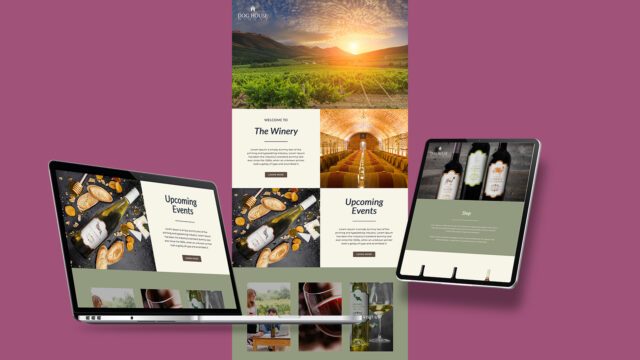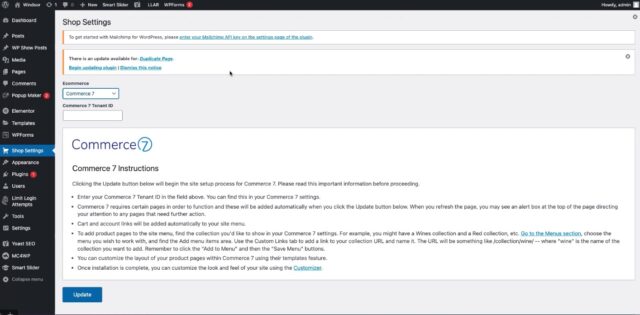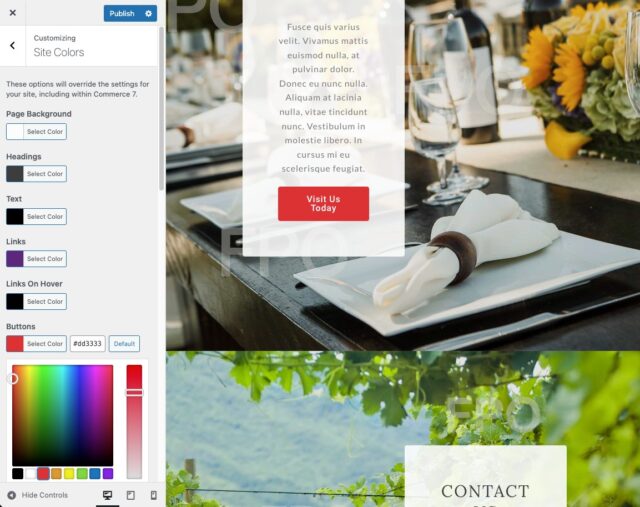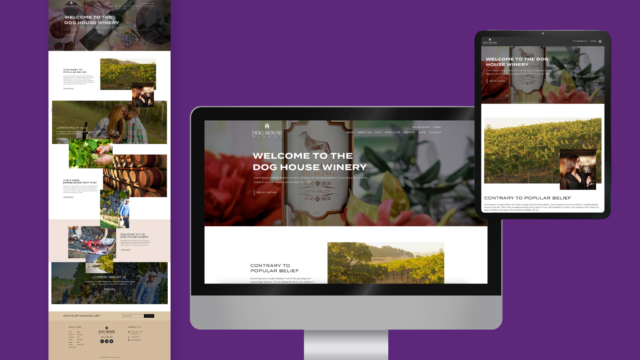E-commerce soared from less than one percent of retail sales at the turn of the century to 16 percent two decades later. COVID-19 lockdowns alone drove online purchasing up six points, from 10 percent in 2019. Wine sales in the healthy $284 billion retail e-commerce market doubled from pre-COVID levels to $3.5 billion, and forecasts show wine revenue increasing by almost 25 percent by 2027.
With direct-to-consumer wine sales accounting for nearly 70 percent of an average winery’s sales, taking advantage of this growing channel is critical. Premium wineries have already increased their online sales from two percent in 2019 to nine percent in 2022. However, the online sales opportunity is significant to small to medium-sized wineries feeling pinched between falling consumption and rising costs ― especially given declining sales in other channels.
That means having a modern, up-to-date website with a smooth transition from general winery pages to online retail stores without the digital friction that causes consumers to abandon 70 percent of their carts.

Simplifying wine e-commerce
Twenty years ago, all websites were custom-made, which required hiring a designer to create a Photoshop mock-up and a programmer to write the code that brought it to life. A winery seeking to maintain or make changes to its website had to learn how to program in HTML, JavaScript and CSS.
Today, 40 percent of the 810 million websites use WordPress, and one-third rely on page builders like WP Bakery and Elementor, with most using templates with drag-and-drop tools. However, these solutions need to be tailored to the wine industry’s unique needs, like compliance with complex state-by-state regulations and wine club management.
So wineries have inserted e-commerce platforms like Commerce7, CompleteDTC by Vinoshipper and WineDirect within their WordPress websites to handle these industry-specific issues. Integrating these e-commerce platforms adds cost and complexity to a winery website ― even when using a pre-made WordPress theme.
Plug-and-play wine templates
Now, wineries have another option. WineGlass Marketing has torn a virtual page from the WordPress playbook and designed a series of pre-built templates in WordPress specifically for the wine industry. These templates include content areas that typical wineries would need such as recipe engines, wine club pages, team pages, photo galleries, wine release features and events. These content pages are available in several different themes as standard WordPress pages and use Elementor to allow wineries to customize them using easy drag and drop tools.
Most importantly, these templates will connect to a e-commerce store on Commerce7, CompleteDTC by Vinoshipper and WineDirect with the click of a button – and all the color and font changes can be customized to match the WordPress pages. It’s now as easy to select or change an e-commerce platform as it is to change a photo.

These turn-key, professional-looking templates save time and money, and every page, including the shopping cart and retail store, can be customized and branded inside the WordPress platform. WineGlass Marketing has five template designs available now and will release seven more at a rate of one per month.
- Austin’s traditional scrolling design is the most popular.
- Bruno’s organic waterfall effect makes images and text flow down the page.
- Buddha is clean, square blocks like Instagram.
- Vanessa is a rich site with huge images and angles and screened-back photos.
- Windsor is luxurious, with text superimposed over dark images.
- Chester is specifically set up for mobile first viewing and uses large checkerboard designs.
WineGlass Marketing has committed to launching a new template a month until twelve different layouts are available.

Nuts and bolts
Templates cost $349 annually, including access to WordPress. Wineries can have WineGlass Marketing’s ITS team host its website on leading host provider WP Engine, ensuring seamless e-commerce store connection for $99 per month. Setup and maintenance packages are available to provide oversight for speed, minimal downtime and functioning links. The team manages software updates, including plug-ins that can open a website to hackers if not updated, and can also automate website backups either locally or on Google Drive or Dropbox. Wineries can take over hosting and maintenance anytime without hidden fees.
Capturing growth opportunities
Why invest time and resources reinventing the wheel or hiring a design agency for a custom website when streamlined and affordable solutions are available? Ideal for wineries whose websites are outdated or in need of a redesign, these templates are also perfect for those waiting for the all-new WineDirect or ready to change e-commerce platforms. WineGlass Marketing templates make the connection seamless with a click of a button.
The main reason, however, is to capture the growth opportunities inherent in a modern, high-functioning website with fully integrated e-commerce. It will help boost exposure to new consumers and those who are too far away to visit the tasting room, eliminate most of the digital friction that causes abandoned carts and attract new consumers to the wine club.
Reach out to WineGlass Marketing at www.WineGlassmarketing.com/wgits/universal-templates.







